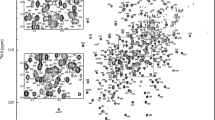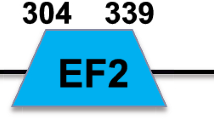Abstract
In mammalian cells, the process of DNA ligation is necessary during DNA replication to create an intact “lagging” strand from a series of smaller Okazaki fragments and to repair DNA strand breaks that arise either due to the direct action of a DNA damaging agent or as a consequence of DNA damage excision during DNA repair. In humans, there are three genes that encode for members of the DNA ligase family (LIG1, LIG3 and LIG4) (Ellenberger and Tomkinson in Ann Rev Biochem 77:313–338. 2008). Although these genes code for polypeptides with overlapping functions in the nucleus, the only mitochondrial DNA ligase (DNA ligase IIIα), which is essential for mitochondrial genome maintenance, is encoded by the LIG3 gene (Lakshmipathy and Campbell in Mol Cell Biol 19:3869–3876, 1999; Zong et al. in Mol Cell 61:667–676, 2016) Because mitochondria play a central and multifunctional role in malignant tumor progression, there is emerging interest in targeting key mitochondrial proteins. Notably, there is evidence in pre-clinical models that inhibitors of DNA ligase IIIα, which is frequently up-regulated in cancer, preferentially target cancer cells via their effect on mitochondria (Zong et al. 2016). Since NMR spectroscopy provides unique capabilities for identifying small molecules that bind specifically to DNA ligase IIIα versus the other DNA ligases), the backbone 1HN, 13C, and 15N NMR resonance assignments were completed for a 222 amino acid DNA-binding domain of human DNA ligase III. These NMR assignments represent a vital first step towards developing DNA ligase III-selective inhibitors.


Similar content being viewed by others
References
Chen J, Tomkinson AE, Ramos W, Mackey ZB, Danehower S, Walter CA, Schultz RA, Besterman JM, Husain I (1995) Mammalian DNA ligase III: molecular cloning, chromosomal localization, and expression in spermatocytes undergoing meiotic recombination. Mol Cell Biol 15:5412–5422
Cotner-Gohara E, Kim IK, Tomkinson AE, Ellenberger T (2008) Two DNA-binding and nick recognition modules in human DNA ligase III. J Biol Chem 283:10764–10772
Cotner-Gohara E, Kim IK, Hammel M, Tainer JA, Tomkinson AE, Ellenberger T (2010) Human DNA ligase III recognizes DNA ends by dynamic switching between two DNA-bound states. Biochemistry 49:6165–6176
Delaglio F, Grzesiek S, Vuister GW, Zhu G, Pfeifer J, Bax A (1995) NMRPipe: a multidimensional spectral processing system based on UNIX pipes. J Biomol NMR 6:277–293
Ellenberger T, Tomkinson AE (2008) Eukaryotic DNA ligases: structural and functional insights. Annu Rev Biochem 77:313–338
Lakshmipathy U, Campbell C (1999) The human DNA ligase III gene encodes nuclear and mitochondrial proteins. Mol Cell Biol 19:3869–3876
Vranken WF, Boucher W, Stevens TJ, Fogh RH, Pajon A, Llinas M, Ulrich EL, Markley JL, Ionides J, Laue ED (2005) The CCPN data model for NMR spectroscopy: development of a software pipeline. Proteins 59:687–696
Wishart DS, Sykes BD, Richards FM (1992) The chemical shift index: a fast and simple method for the assignment of protein secondary structure through NMR spectroscopy. Biochemistry 31:1647–1651
Zong WX, Rabinowitz JD, White E (2016) Mitochondria and cancer. Mol Cell 61:667–676
Acknowledgements
This work is supported in part by the University of Maryland Baltimore, School of Pharmacy Mass Spectrometry Center (SOP1841-IQB2014) and shared instrumentation grants to the UMB NMR center from the National Institutes of Health [S10 RR10441, S10 RR15741, S10 RR16812, and S10 RR23447 (D.J.W.)] and from the National Science Foundation (DBI 1005795 to D.J.W.). This work was also supported via the Center for Biomolecular Therapeutics (CBT) at the University of Maryland. Studies on DNA ligase III in the Tomkinson laboratory at the University of New Mexico Cancer Center, an NCI-designated Comprehensive Cancer Center [CA118100] were supported in part by grants from the National Institutes of Health [ES012512, CA92584].
Author information
Authors and Affiliations
Corresponding author
Ethics declarations
Conflict of interest
The authors declare that they have no conflict of interest.
Additional information
Publisher's Note
Springer Nature remains neutral with regard to jurisdictional claims in published maps and institutional affiliations.
Rights and permissions
About this article
Cite this article
Roth, B.M., Varney, K.M., Yang, H. et al. 1HN, 13C, and 15N backbone resonance assignments of the human DNA ligase 3 DNA-binding domain (residues 257-477). Biomol NMR Assign 13, 305–308 (2019). https://doi.org/10.1007/s12104-019-09896-9
Received:
Accepted:
Published:
Issue Date:
DOI: https://doi.org/10.1007/s12104-019-09896-9




